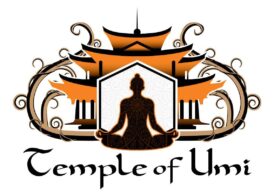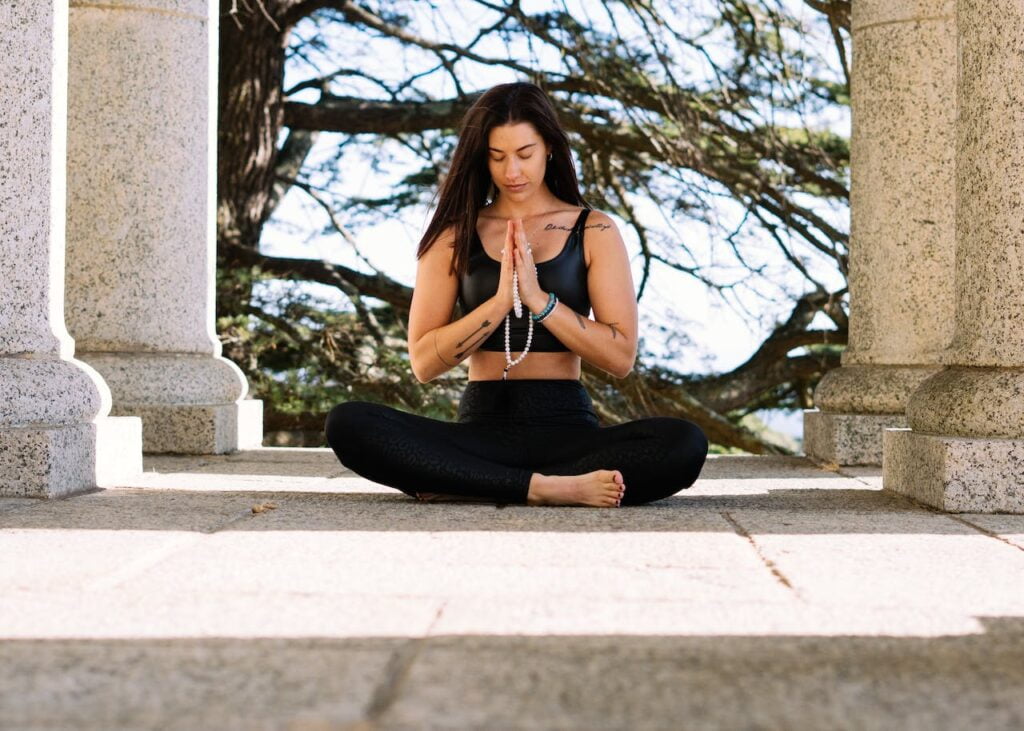Taoist meditation

By Temple of Umi

Table of Contents
Explore the transformative Taoist meditation lifestyle, integrating ancient principles into daily life for harmony and mindfulness. Discover the impact of diet, exercise, and building a supportive community on your meditation practice.
Introduction
Taoist meditation embodies a profound spiritual practice deeply rooted in the rich tapestry of ancient Chinese philosophy and wisdom. This form of meditation is not merely a technique for relaxation or stress relief; it is a gateway to understanding the fundamental principles of the universe as perceived through Taoism. At its core, Taoist meditation seeks to harmonize the individual’s inner world with the Tao, or “the Way,” which represents the ultimate essence of existence and the universe’s natural order.
Brief Overview of Taoist Meditation
Taoist meditation is characterized by its diverse methods and practices aimed at cultivating a deep sense of inner peace, balance, and spiritual insight. Unlike some meditation practices that focus solely on mindfulness or concentration, Taoist techniques encompass a broad range of practices, including breath control, visualization, movement (as seen in Tai Chi and Qigong), and the cultivation of internal energy known as Qi. These practices are designed to guide practitioners toward a state of harmony with the Tao, leading to profound inner transformation and enlightenment.
The Origins of Taoist Meditation in Ancient China
The roots of Taoist meditation stretch back to ancient China, where Taoism emerged as a philosophy and a religion over two thousand years ago. The foundational texts of Taoism, the “Tao Te Ching” by Laozi and the writings of Zhuangzi, contain early references to meditation practices aimed at cultivating life force and achieving unity with the Tao. These ancient teachings have been passed down through generations, evolving to include many meditative techniques that remain central to Taoist practice today.
Importance and Benefits of Taoist Meditation in Contemporary Life
In today’s fast-paced and often chaotic world, Taoist meditation offers a sanctuary for those seeking solace and a more profound sense of meaning. The benefits of these ancient practices extend far beyond mere relaxation or stress management. Regular practice can enhance emotional balance, increase vitality and longevity, improve health, and have a deeper connection with the natural world. By fostering a state of calm and centeredness, Taoist meditation empowers individuals to navigate life’s challenges with grace and poise, promoting a holistic sense of well-being that is both profound and transformative. Learn more.
Understanding the Tao in Meditation
The Concept of Tao in Taoism
The Tao, a central concept in Taoism, defies simple definition. It is often described as the ultimate creative principle of the universe, the source and end of all things, and the path of natural order. The Tao is everything and nothing, visible in the natural world yet beyond human comprehension. Understanding and aligning with the Tao is the key to living a balanced and harmonious life in Taoism.
How Taoist Meditation Aims to Harmonize with the Tao
Taoist meditation practices are designed to harmonize the practitioner’s energy and consciousness with the Tao. Through various techniques, practitioners learn to dissolve their ego boundaries and transcend the illusion of separation between self and the universe. This alignment with the Tao fosters a deep sense of unity and interconnectedness with all things, leading to spiritual awakening and enlightenment.
The Principle of Wu Wei (Non-Action) in Taoist Meditation
Wu Wei, or non-action, is a principle central to Taoism and Taoist meditation. It does not imply inactivity but rather an action perfectly harmonious with the flow of life, effortless and without force. In Taoist meditation, Wu Wei involves letting go of forced effort and mental striving, allowing the mind to settle into a state of natural ease and alignment with the Tao. This principle teaches practitioners to respond to life’s events with flexibility and spontaneity, embodying the flow of the Tao in every aspect of their existence. Learn more.
Core Taoist Meditation Techniques
Taoist meditation offers a rich tapestry of practices designed to harmonize the mind, body, and spirit with the fundamental principles of the universe. These ancient techniques foster inner peace and enhance one’s vital energy, or Qi, promoting overall well-being and spiritual growth. Here, we delve into three pivotal Taoist meditation practices that are pillars of this profound spiritual tradition.
Zuo Wang (Sitting and Forgetting): Exploring Mindfulness and Letting Go
- Foundation: Zuo Wang, literally translating to “sitting and forgetting,” is a meditation technique emphasizing the release of all mental constructs, allowing practitioners to experience a state of pure being.
- Practice Essentials: The practitioner sits quietly, gradually letting go of thoughts, emotions, and bodily sensations, aiming to transcend personal identity and merge with the Tao, the ultimate reality.
- Benefits: This method cultivates a profound inner stillness and clarity, reducing stress and fostering a deep sense of peace.
Nei Gong (Inner Work): Cultivating Internal Energy (Qi)
- Core Principle: Nei Gong focuses on cultivating and refining Qi, the life force or vital energy that flows through all living beings.
- Techniques: Through meditation, breathing exercises, and subtle movements, practitioners learn to accumulate, circulate, and harmonize Qi within their bodies.
- Outcomes: Regular Nei Gong practice enhances physical health, emotional balance, and spiritual awareness, laying the foundation for advanced spiritual development.
Microcosmic Orbit: Enhancing Energy Flow through the Body’s Meridians
- Overview: The Microcosmic Orbit is a sophisticated practice that involves guiding Qi through the body’s two main meridians, the Ren (front) and Du (back) channels.
- Methodology: Practitioners visualize and direct the flow of Qi, starting from the base of the spine to the crown of the head and then down the front of the body, creating a continuous energy loop.
- Advantages: This technique purifies the energy pathways, enhances vitality, and promotes the healing of physical and emotional ailments. Learn more.
The Five Elements and Taoist Meditation
At the heart of Taoist cosmology lies the Five Elements theory—Wood, Fire, Earth, Metal, and Water—each representing different aspects of the natural world and human constitution. Understanding and balancing these elements through meditation is essential for achieving harmony with the Tao and realizing one’s spiritual potential.
Understanding the Five Elements Theory
- Conceptual Framework: The Five Elements theory posits that all aspects of life are interconnected and influenced by these elemental forces, which undergo continuous cycles of interaction and transformation.
- Personal Application: In Taoist practice, recognizing the influence of each element within oneself is crucial for spiritual and physical balance.
Balancing the Five Elements through Meditation
- Techniques: Taoist meditations often involve visualizations and affirmations corresponding to the Five Elements, aiming to balance their energies within the practitioner.
- Example Practices: Meditating on the colour, sound, and emotional attributes of each element helps harmonize the body and spirit.
Practical Exercises to Connect with the Elements
- Wood Element: Focus on growth and flexibility, visualizing green light and feeling expansion in the liver area to promote kindness and decisiveness.
- Fire Element: Concentrate on warmth and joy, visualizing red light and fostering openness in the heart to enhance love and happiness.
- Earth Element: Meditate on stability and nourishment, visualizing yellow light and balancing the stomach and spleen to cultivate empathy and care.
- Metal Element: Reflect on clarity and purity, visualizing white light and purifying the lungs to encourage righteousness and courage.
- Water Element: Contemplate fluidity and wisdom. Visualize blue light and calm the kidneys to promote calmness and willpower. Learn more.
The Role of Breath in Taoist Meditation
Taoist meditation practices underscore the profound significance of breath as the bridge between the physical body and the spiritual essence. In Taoist philosophy, breath is more than just the air we breathe; it’s the very life force, or Qi, that permeates the universe. Understanding and harnessing this life force through controlled breathing techniques is central to achieving harmony and enlightenment in Taoism.
- The Significance of Breath in Taoist Practices: In the heart of Taoist meditation lies the belief that breath control is the key to balancing Qi within the body. This balance is crucial for health, vitality, and spiritual awakening. By mastering the breath, practitioners can influence their physical and energetic states, steering them towards a state of harmony with the Tao, the ultimate reality and source of all existence in Taoist thought.
- Techniques for Breath Control and Cultivation of Qi: Taoist meditation introduces several breath control techniques designed to cultivate and harness Qi. These techniques vary from simple, deep abdominal breathing, which calms the mind and stabilizes the emotions, to more advanced practices like the “Breath of Fire,” which invigorates and energizes the body. Consistent practice of these breathing techniques enhances vitality, improves health, and deepens meditation, allowing practitioners to access higher states of consciousness.
- Integrating Breath Work with Meditation for Deeper Practice: Taoist teachings recommend integrating breath work with quiet sitting and mindfulness to deepen one’s meditation practice. This integration facilitates a deeper connection with the Tao, enabling practitioners to transcend physical boundaries and reach a state of spiritual unity with the cosmos. Meditators can clear the mind of distractions by focusing on the breath, achieving inner stillness, and opening the gateway to profound spiritual insights.

Taoist Visualization and Mantra Meditation
Taoist meditation also employs visualization and mantra recitation as powerful tools for spiritual advancement. These practices are designed to focus the mind, direct energy, and invoke the presence of divine powers or natural forces, aiding the practitioner in their journey towards enlightenment.
- The Use of Visualization in Taoist Meditation: Visualization in Taoist meditation involves picturing specific images, symbols, or scenarios to guide Qi flow within the body or to connect with the energies of the universe. Practitioners might visualize a golden light filling their body, symbolizing the purifying and enlightening power of the Tao. Alternatively, they may imagine themselves in a serene, sacred place to enhance their meditation experience. These visualizations serve to focus the mind and open the heart, fostering a deeper connection with the divine.
- Introduction to Taoist Mantras and Their Benefits: Mantras, or sacred sounds, are another cornerstone of Taoist practice. Reciting these sounds or phrases is believed to resonate with the universe’s vibrations, aligning the practitioner’s energy with cosmic forces. This alignment deepens meditation and promotes healing, peace, and spiritual awakening. Taoist mantras can be as simple as repeating the name of a deity or as complex as chanting a series of syllables designed to invoke specific energies or blessings.
- Combining Visualization and Mantras for Spiritual Advancement: Taoist meditators can significantly enhance their practice by combining visualization and mantra recitation. This combination acts to focus and amplify the practitioner’s intentions, making it a potent method for achieving specific spiritual goals, whether healing, protection, enlightenment, or connecting with the Tao. Regular practice of these techniques fosters a profound sense of inner peace, balance, and unity with the universe, marking the path to true spiritual fulfilment.
Embarking on the Taoist Meditation Journey
Embarking on the Taoist meditation journey invites you into a world where harmony, energy, and tranquillity guide your path to self-discovery and spiritual enlightenment. This ancient practice, deeply rooted in the Taoist philosophy of living in accordance with the Tao, or the way of nature, offers a transformative experience for both the mind and body. To fully embrace Taoist meditation, one must prepare with intention, engage in daily practices, and navigate the challenges that arise with patience and perseverance.
Preparing for Taoist Meditation: Setting Intentions and Creating Space
- Setting Intentions: Begin your Taoist meditation journey by setting clear intentions. Ask yourself what you wish to achieve through your practice, whether inner peace, spiritual growth, or enhanced mindfulness. Your intentions will guide your path and motivate you.
- Creating Space: Your physical environment can significantly impact your meditation practice. Find a quiet, comfortable spot where you can sit undisturbed. This space should feel safe and serene, adorned with elements that promote relaxation and focus, such as candles, incense, or soothing colours.
Daily Practices for Beginners
- Mindful Breathing: Start with the basics of conscious breathing to cultivate Qi, the vital life force. Focus on your breath, inhaling and exhaling slowly and deeply, to centre your mind and prepare it for deeper meditation practices.
- Zuo Wang (Sitting and Forgetting): This practice involves sitting quietly, letting go of thoughts and emotions, and forgetting everything but the present moment. It helps in developing mindfulness and tranquillity.
- Observing the Natural World: Spend time in nature, observing its patterns, rhythms, and beauty. This practice encourages a deeper connection with the Tao, understanding its flow and learning to align yourself with it.
Overcoming Common Challenges in Taoist Meditation
- Distractions: It’s natural for beginners to face distractions. When your mind wanders, gently guide it back to your breath or the focus of your meditation without judgment.
- Impatience: Spiritual growth and mastery of meditation techniques take time. Embrace the journey with patience, celebrating small progress and insights.
- Consistency: Maintaining a regular practice can be challenging. Set a specific time for meditation each day to build a consistent routine that fits your lifestyle.
Advanced Taoist Meditation Practices
Introduction to Advanced Techniques and Their Purposes
Advanced Taoist meditation practices delve deeper into the spiritual and energetic realms, aiming to harmonize the practitioner with the Tao further. Techniques such as the Microcosmic Orbit, where one learns to circulate Qi through the body’s energy pathways, and Nei Gong, the internal energy cultivation, are explored. These practices enhance spiritual awareness, energy levels, and overall well-being.
The Integration of Martial Arts and Qigong with Meditation
- Martial Arts: Taoist meditation and martial arts are intrinsically linked. Both disciplines emphasize balance, focus, and the flow of Qi. Practices like Tai Chi combine meditative movements with self-defence techniques, promoting physical health and mental clarity.
- Qigong is a holistic system of coordinated body posture, movement, breathing, and meditation used for health, spirituality, and martial arts training. Integrating Qigong with meditation enhances the flow of Qi, supports healing, and strengthens the body-mind connection.
Exploring the Spiritual Dimensions of Taoist Meditation
Advanced Taoist meditation practices offer a pathway to explore the profound spiritual dimensions of existence. Through disciplined practice, one can experience transcendent states of consciousness, profound inner peace, and a deepened understanding of the universe and one’s place within it. This journey towards spiritual enlightenment is marked by an ever-deepening harmony with the Tao, revealing the interconnectedness of all things and the wisdom of living by nature’s way.

The Taoist Meditation Lifestyle
Incorporating Taoist Meditation Principles into Daily Life
Adopting a Taoist meditation lifestyle transcends the mere act of meditation; it’s about infusing every moment with mindfulness and harmony. The essence of Taoism, characterized by flow and balance, offers a profound template for living. Integrating Taoist meditation principles into daily routines can dramatically transform one’s life. This means starting the day with a quiet meditation session to align with the Tao, practising mindfulness in every action, and reflecting on the harmony between oneself and the natural world. Such practices foster a deep, peaceful connection with the inner self and the universe.
- Morning Rituals: Begin each day with a simple meditation to cultivate inner silence and prepare the mind and body for the day ahead.
- Mindful Living: Approach daily tasks with full awareness, turning routine activities into meditative practices.
- Evening Reflection: End the day with gratitude, reflecting on the lessons learned and the harmony experienced.
The Impact of Diet, Exercise, and Lifestyle Choices on Meditation Practice
The Taoist approach to diet, exercise, and overall lifestyle is deeply intertwined with meditation practices. A balanced diet, rooted in Taoist principles, favours natural, seasonal foods that align with the body’s needs, promoting energy flow and mental clarity. Exercise, notably Tai Chi and Qigong, is seen as physical activity and moving meditation that enhances vitality and supports meditation practices.
- Taoist Diet: Emphasize whole, unprocessed foods to nourish the body and support more profound meditation experiences.
- Exercise as Moving Meditation: Regularly practice Tai Chi or Qigong to cultivate Qi (life energy) and improve focus.
- Holistic Lifestyle Choices: Prioritize sleep, manage stress, and seek harmony in personal relationships to enhance the quality of meditation.
Building a Community: Connecting with Others on the Taoist Path
One of the beautiful aspects of the Taoist meditation lifestyle is the emphasis on community. While the journey is deeply personal, sharing experiences, insights, and practices with others can magnify the benefits. Building a community of like-minded individuals offers support, deepens understanding, and fosters a sense of belonging. Whether through online forums, local meditation groups, or Taoist retreats, connecting with others on the Taoist path enriches the practice and provides valuable perspectives.
- Join or Create Meditation Groups: Share practices and learn from others in a supportive environment.
- Attend Workshops and Retreats: Deepen your practice and understanding of Taoist principles.
- Engage in Online Communities: Share experiences and insights with a global Taoist community.

Final words
The transformative power of Taoist meditation is profound, touching every aspect of life. It’s a journey that cultivates harmony, balance, and a deep connection with the natural world. By integrating Taoist principles into daily life, embracing a supportive lifestyle, and building a community, individuals can enhance their meditation practice and experience significant personal growth.
As you continue to explore and practice Taoist meditation, remember that the path is as unique as the individual walking it. Encouragement for ongoing practice and exploration cannot be overstated; there is always more to learn, understand, and experience. Finally, sharing your journey, insights, and experiences enriches your practice and supports and inspires others on their paths. The Taoist meditation lifestyle is a beautiful, evolving journey of harmony, and every step taken is a step toward profound transformation.
- Sacred Plant Medicine Retreats in Georgia
- 5 Ayahuasca Retreats in California Worth Exploring
- 7 Best Aya Retreats in America. Click here.
- Mcdonough Ayahuasca retreat
- Conley Ayahuasca retreat
- Whitesburg Ayahuasca retreat
- Brooks Ayahuasca retreat
- Gay Ayahuasca retreat
- Williamson Ayahuasca retreat
- Orchard Hill Ayahuasca retreat
- Glenn Ayahuasca retreat
- Luthersville Ayahuasca retreat
- Shady Dale Ayahuasca retreat
- Bowdon Junction Ayahuasca retreat
- Sargent Ayahuasca retreat
- Greenville Ayahuasca retreat
- Lovejoy Ayahuasca retreat
- Winston Ayahuasca retreat
- Rutledge Ayahuasca retreat
- Moreland Ayahuasca retreat
- Molena Ayahuasca retreat
- Lebanon Ayahuasca retreat
- Good Hope Ayahuasca retreat
- Haralson Ayahuasca retreat
- An Inclusive List of Psychedelic Quotes
- Mount Ayahuasca retreat
- Grantville Ayahuasca retreat
- Pine Lake Retreat near
- Rydal Ayahuasca retreat
- Porterdale Ayahuasca retreat
- Waco Ayahuasca retreat
- Temple Ayahuasca retreat
- Bethlehem Ayahuasca retreat
- Jenkinsburg Ayahuasca retreat
- Adairsville Ayahuasca retreat
- Red Oak Ayahuasca retreat
- Woodbury Ayahuasca retreat
- Cassville Ayahuasca retreat
- Redan Ayahuasca retreat
- North Decatur Ayahuasca retreat
- Grantville Ayahuasca retreat
- Hillsboro Ayahuasca retreat
- Jackson Ayahuasca retreat
- Braselton Ayahuasca retreat
- Zebulon Ayahuasca retreat
- Flovilla Ayahuasca retreat
- Auburn Ayahuasca retreat
- Warm Springs Ayahuasca retreat
- Scottdale Ayahuasca retreat
- Lithia Springs Ayahuasca retreat
- Villa Rica Ayahuasca retreat
- Grayson Ayahuasca retreat
- Sunny Side Ayahuasca retreat
- Senoia Ayahuasca retreat
- Locust Grove Ayahuasca retreat
- Chamblee Ayahuasca retreat
- Fairburn Ayahuasca retreat
- Snellville Ayahuasca retreat
- Monticello Ayahuasca retreat
- Union City Ayahuasca retreat
- Tallapoosa Ayahuasca retreat
- Bremen Ayahuasca retreat
- Hampton Ayahuasca retreat
- Monroe Ayahuasca retreat
- Marble Hill Ayahuasca retreat
- Madison Ayahuasca retreat
- Dawsonville Ayahuasca retreat
- Felton Ayahuasca retreat
- Concord Ayahuasca retreat
- Mansfield Ayahuasca retreat
- Taylorsville Ayahuasca retreat
- Roopville Ayahuasca retreat
- Turin Ayahuasca retreat
- Franklin Ayahuasca retreat
- Clarkdale Ayahuasca retreat
- Talking Rock Ayahuasca retreat
- Jersey Ayahuasca retreat
- Kingston Ayahuasca retreat
- Bostwick Ayahuasca retreat
- North Metro Ayahuasca retreat
- Meansville Ayahuasca retreat
- Social Circle Ayahuasca retreat
- White Ayahuasca retreat
- Rhode Island Ayahuasca retreat
- Maryland Ayahuasca retreat
- Delaware Ayahuasca retreat
- New Jersey Ayahuasca retreat
- Connecticut Ayahuasca retreat
- Massachusetts Ayahuasca retreat
- Hampshire Ayahuasca retreat
- Pennsylvania Ayahuasca retreat
- New York Ayahuasca retreat
- Florida Ayahuasca retreat
- South Carolina Ayahuasca Retreat
- North Carolina Ayahuasca Retreat
- West West Virginia Ayahuasca retreat
- Virginia Ayahuasca retreat
- Ohio Ayahuasca retreat
- Alabama Ayahuasca retreat
- Mississippi Ayahuasca retreat
- Tennessee Ayahuasca retreat
- Kentucky Ayahuasca retreat
- IndianaAyahuasca retreat
- ILLINOIS Ayahuasca retreat
- Missouri Ayahuasca retreat
- Arkansas Ayahuasca retreat
- Louisiana Ayahuasca retreat
- Texas Ayahuasca retreat
- Oklahoma Ayahuasca retreat
- KansasAyahuasca retreat
- Ayahuasca retreats near me in Experiment.
- A wellness retreat in Georgia
- What is Ayahuasca?
- Embark on a Journey of Transformation with Spiritual Healing
- Unveiling Healing Energy at the Temple of Umi
- 10 Energy Healing Techniques to Transform Your Life
- Where to get Ayahuasca in the USA
- Top Ayahuasca retreats in the USA. Learn more.
- Cost of Ayahuasca Retreat: Balancing Cost and Experience. Learn more.
- What is trauma bonding?
- A Journey into the Healing Properties of Psychedelic Mushrooms. Learn more.
- Ayahuasca Retreat Georgia – Experience Spiritual Awakening
- Spiritual Retreats Georgia
- Shaman in America Exploration
- Shamanism – Shamanic healing
- Shaman Healing Guide
- Ayahuasca ceremonies Ayahuasca ceremonies near you in the USA
- Ayahuasca Experience
- DMT Journey, Benefits, and Side Effects
- Iowaska – What is it?
- Plant medicine retreats in Georgia
- Why massage is beneficial, according to a cardiologist.
- Are mushrooms truffles – What Is a Truffle?
- 11 Best Ayahuasca Retreats in the USA for Spiritual Healing
- What is Rapé?
- What is a Tincture?
- Where to find Ayahuasca near me
- Healing retreats USA
- Best Retreats USA








